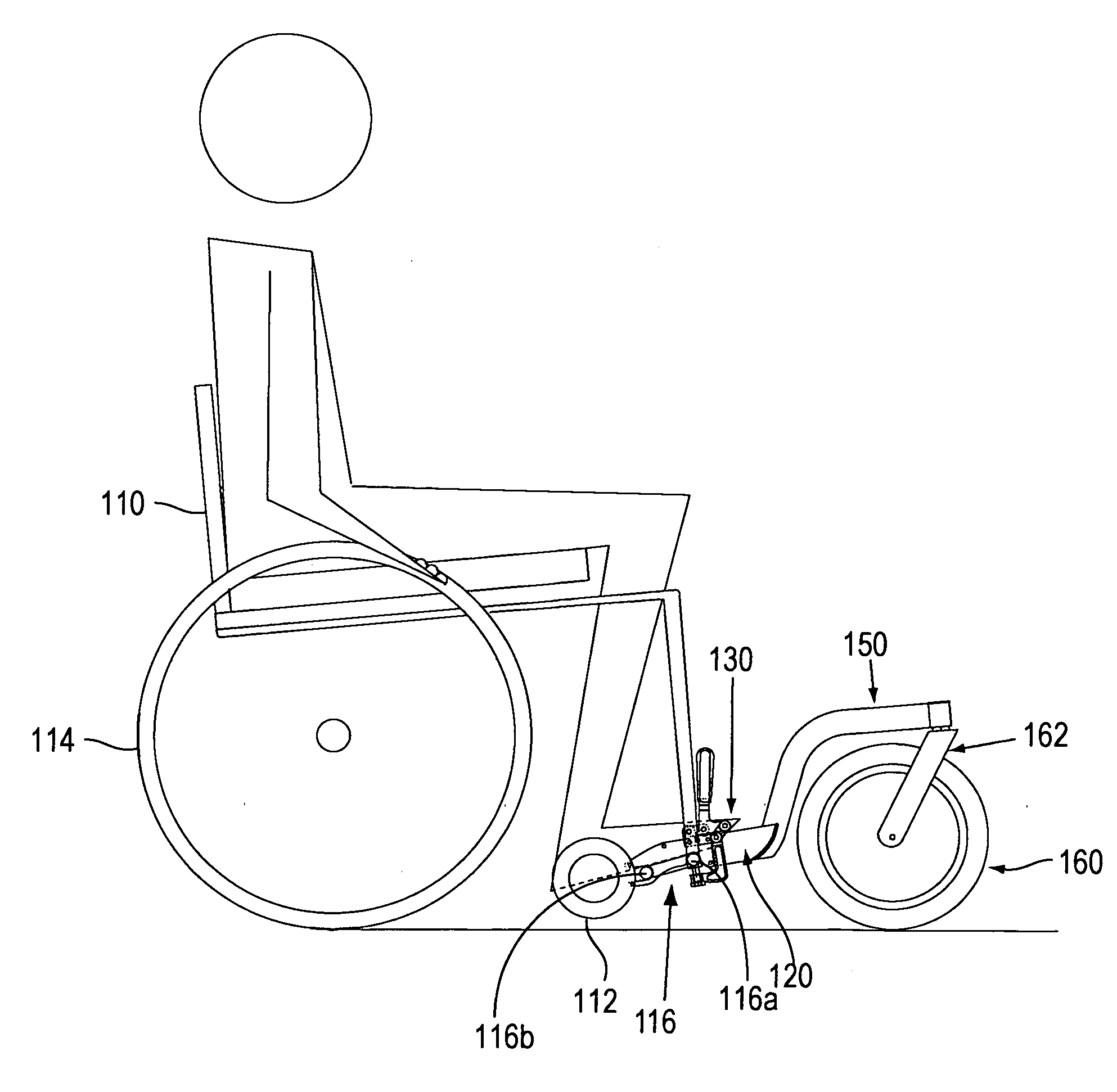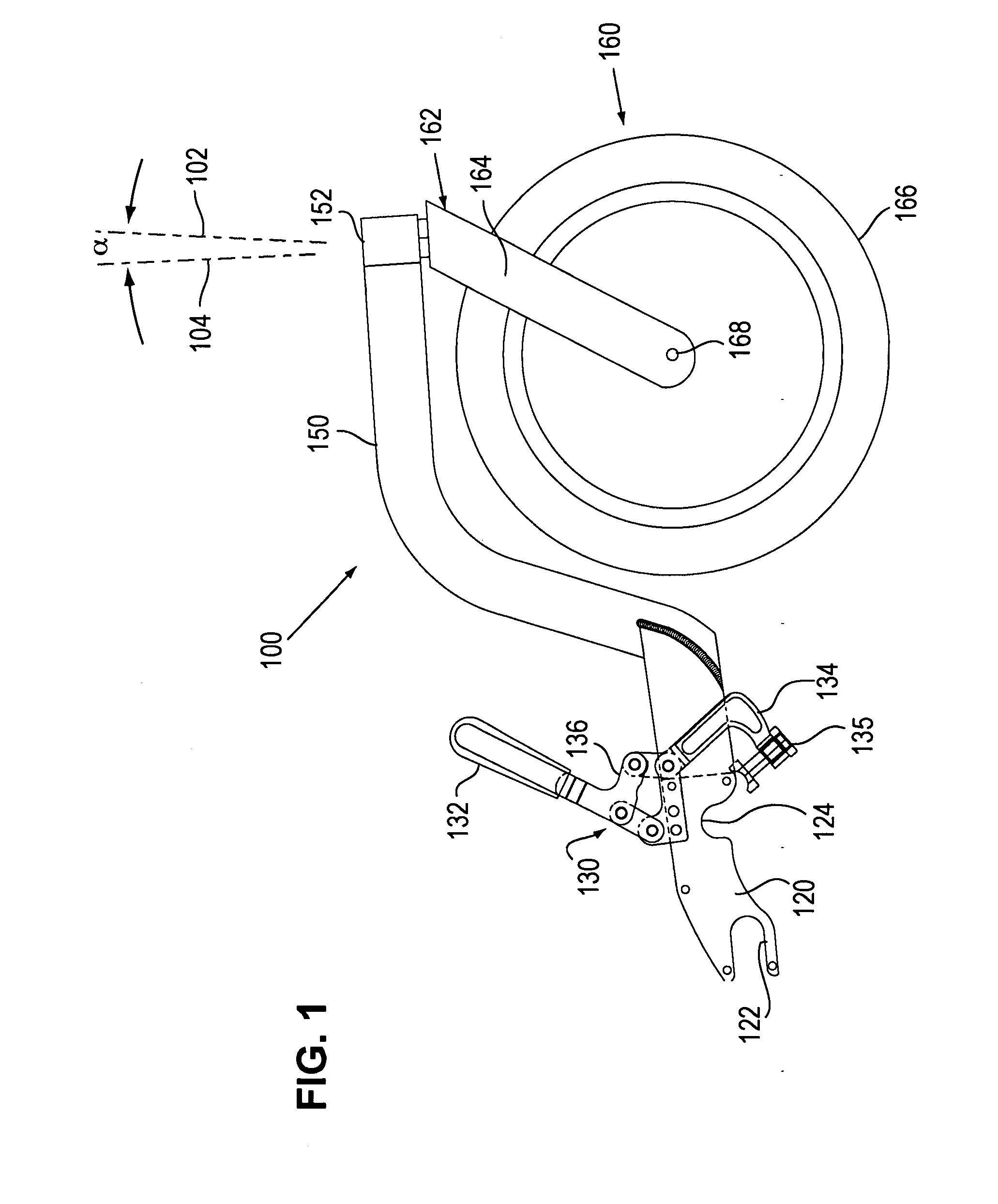All terrain adapter for a wheelchair
a technology for wheelchairs and adapters, applied in the field of wheelchairs, can solve the problems of user falling out of the wheelchair, the front wheels can unintentionally be directed in the other direction of movement, and the wheelchair is difficult to move and control, so as to relieve the weight of the wheelchair from the front wheels. , the effect of easy installation and removal
- Summary
- Abstract
- Description
- Claims
- Application Information
AI Technical Summary
Benefits of technology
Problems solved by technology
Method used
Image
Examples
second embodiment
[0038]Referring now to FIGS. 4 and 5, an adapter 200 according to the invention comprises a fixture 220 mounted to the wheelchair foot support 116 by any means, such as a clamp 230 or with bolts. In the preferred embodiment, the fixture 220 is equipped on its forward, underside edge with a forwardly facing channel member 221. It is also equipped on its rearward, underside edge with a downwardly facing channel member 222. During installation, the fixture 220 is installed with the member 221 engaged with the front bar 116a of the foot support 116 and, as the fixture 220 is rotated counterclockwise (as viewed in FIG. 4), the member 222 engages the rear bar 116b of the foot support 116. The clamp handle 232 is then moved to its closed position, causing the clamp's hook 235 to clamp the rear bar 116b in the member 222. The fixture 220 can be left on whether or not the adapter is being used. The fixture 220 includes a socket type fitting 240 similar in concept to that used with a trailer ...
first embodiment
[0039]A nose gear wheel 260 assembly, similar in construction to the nose gear wheel assembly 160, is located at the other end of the support 250. The nose gear wheel assembly 260 has wheel 266 with a diameter (10″ to 16″ and preferably about 12″) much larger that the diameters of the front wheels 112 and is large enough to roll over holes, obstacles, or soft surfaces that can be expected to be encountered when traveling off of normal, smooth, hard terrain. The nose gear wheel 266 is mounted between the parallel legs 264 of a fork 262 that is swivel mounted 252 to the free end of the support 250. The legs 264 are canted at about 27° from the vertical so as to slope back toward the front wheels 112 from the top of the fork 262 to produce a positive trail of about 3″. In this way, the nose gear wheel 260 swivels in such a manner that, when the wheelchair 110 is moving forward, the top of the fork 262 is adjacent to the leading edge of the nose gear wheel 260. Additionally, the swivel ...
PUM
 Login to View More
Login to View More Abstract
Description
Claims
Application Information
 Login to View More
Login to View More - R&D
- Intellectual Property
- Life Sciences
- Materials
- Tech Scout
- Unparalleled Data Quality
- Higher Quality Content
- 60% Fewer Hallucinations
Browse by: Latest US Patents, China's latest patents, Technical Efficacy Thesaurus, Application Domain, Technology Topic, Popular Technical Reports.
© 2025 PatSnap. All rights reserved.Legal|Privacy policy|Modern Slavery Act Transparency Statement|Sitemap|About US| Contact US: help@patsnap.com



